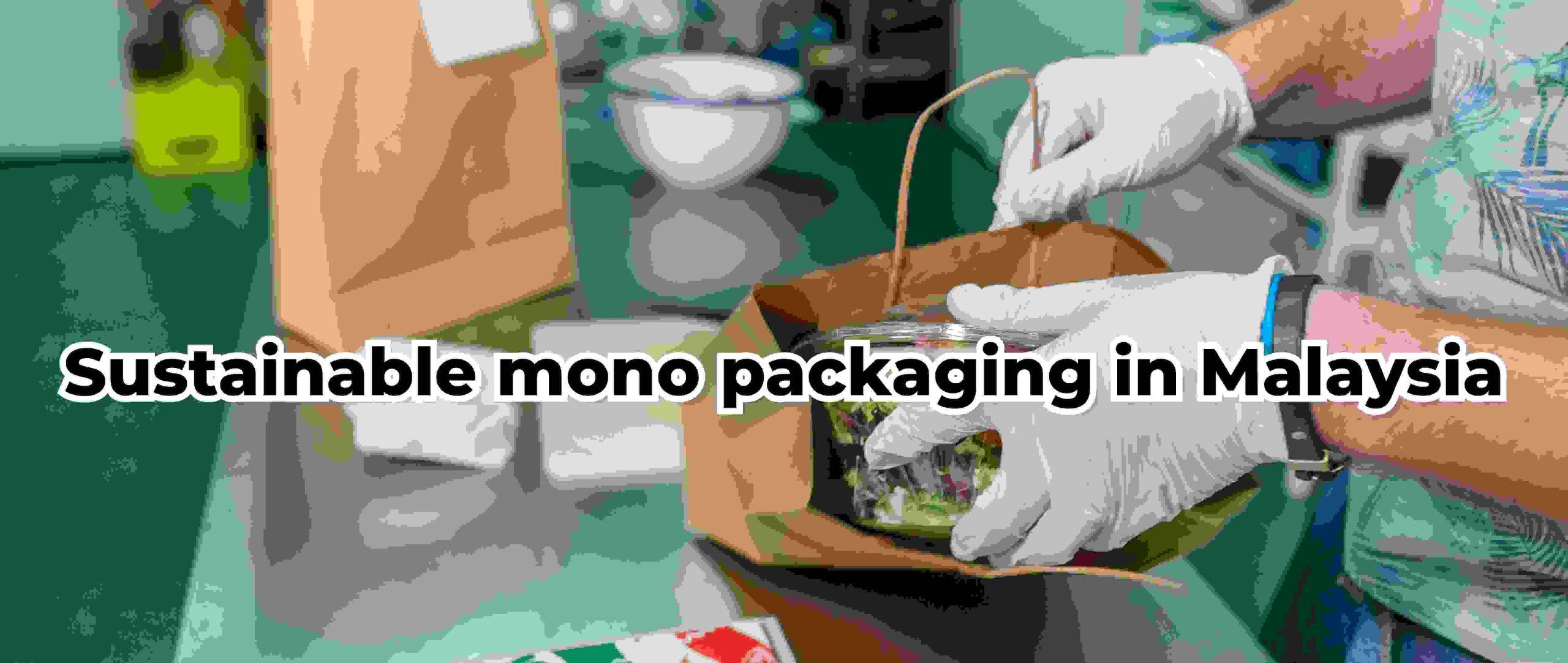Introduction:
In Malaysia, the quest for sustainable packaging solutions has gained momentum as environmental awareness grows and the need to reduce plastic pollution becomes increasingly apparent. Among the various approaches to sustainable packaging, the adoption of mono packaging materials stands out for its simplicity, recyclability, and reduced environmental impact. This article delves into the most suitable food packaging materials for sustainable mono packaging in Malaysia, considering factors such as recyclability, biodegradability, and resource efficiency.
1. Paper and Cardboard:
Paper and cardboard are versatile and widely used materials for sustainable mono packaging in Malaysia. Sourced from renewable forests or recycled paper fibers, these materials offer a sustainable alternative to plastic packaging. In Malaysia, paper-based packaging solutions, such as cartons, boxes, and trays, are commonly used for various food products, including fruits, vegetables, baked goods, and dairy products.
Advantages:
– Recyclability: Paper and cardboard are easily recyclable, allowing them to be recovered and reused in the production of new packaging materials.
– Renewable and biodegradable: Paper and cardboard are derived from natural fibers and can be composted or biodegraded, reducing environmental impact.
– Customizability: Paper-based packaging can be customized in terms of size, shape, and design, offering flexibility to meet diverse packaging needs and branding requirements.
2. Bioplastics:
Bioplastics are a category of materials derived from renewable biomass sources, such as plants, starches, or agricultural residues. In Malaysia, bioplastics are gaining traction as a sustainable alternative to conventional plastics for food packaging applications. Bioplastics can be used to manufacture various types of packaging, including bags, films, containers, and utensils.
Advantages:
– Renewable and biodegradable: Bioplastics are derived from renewable biomass sources and can be composted or biodegraded, reducing environmental impact.
– Reduced carbon footprint: Bioplastics have a lower carbon footprint compared to conventional plastics, as they sequester carbon during the growth phase of the biomass feedstock.
– Versatility: Bioplastics can be formulated to exhibit a wide range of properties, including flexibility, durability, and barrier properties, making them suitable for various food packaging applications.
3. Compostable Materials:
Compostable materials are designed to break down into organic matter under controlled composting conditions, resulting in nutrient-rich compost that can enrich soil health. In Malaysia, compostable materials such as compostable plastics and paper-based products are increasingly used in sustainable mono packaging for food service and single-use items.
Advantages:
– Environmental compatibility: Compostable materials break down into natural components without leaving behind harmful residues or toxins, minimizing environmental impact.
– Soil enrichment: Compost derived from compostable materials can be used as a nutrient-rich soil amendment, promoting soil fertility and enhancing agricultural sustainability.
– Regulatory compliance: Compostable materials often comply with international standards and certifications for composability, providing assurance of their environmental credentials.
4. Recycled Materials:
Recycled materials play a crucial role in sustainable mono packaging by diverting waste from landfills and reducing the demand for virgin resources. In Malaysia, recycled materials such as recycled paper, cardboard, and plastics are utilized in packaging applications, contributing to resource conservation and waste reduction efforts.
Advantages:
– Waste diversion: Recycled materials utilize post-consumer or post-industrial waste streams, diverting waste from landfills and reducing the environmental burden of waste disposal.
– Energy savings: Recycling materials requires less energy compared to manufacturing virgin materials from raw resources, resulting in energy savings and reduced carbon emissions.
– Closed-loop systems: Recycled materials can be integrated into closed-loop systems, where products are recycled and reused indefinitely, promoting a circular economy and resource sustainability.
Conclusion:
In conclusion, sustainable food packaging materials for mono packaging in Malaysia encompass a diverse array of options, each offering unique advantages in terms of recyclability, biodegradability, and resource efficiency. From paper and cardboard to bioplastics, compostable materials, and recycled resources, Malaysia has a wealth of sustainable packaging materials at its disposal. By embracing these materials and fostering innovation in packaging design and technology, Malaysia can advance its sustainability goals and pave the way towards a greener, more sustainable future for the food packaging industry.
#sustainable mono packaging in Malaysia
#Ajinomoto (Malaysia) Berhad
Want to know more? Read: https://www.happyvisiont.com/how-sustainable-mono-packaging-in-malaysia-preserves-natural-resources/


